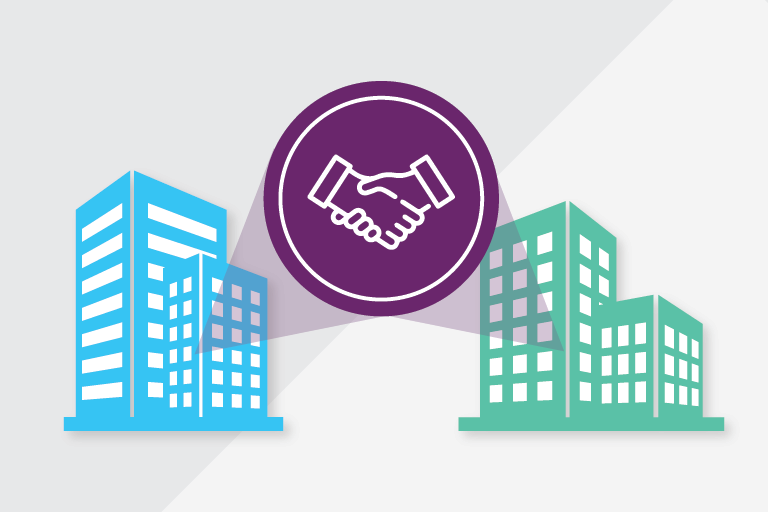We live in a world where increasingly, the end user holds the buying power. This means that for many business-to-business (B2B) brands to be successful, they need to turn individual users into product champions.
Many of today’s leading B2B brands outpace the market by “consumerizing” their marketing strategy—placing an extra focus on every end user, rather than a single buyer or handful of buyers. B2B brands need to find modern solutions that can improve engagement and product familiarity, more effectively push users toward organic upsell and cross-sell opportunities, and ultimately create lifelong champions—often within a product-led growth (PLG) model.
Understanding this is one thing, executing is another.
Consumerization of B2B Practices
The B2B brands that have been most successful at this are those applying what have historically been business-to-consumer (B2C) strategies, which are inherently designed for 1:1 communications with customers.
One simple example we’re all familiar with: two consumers who purchased different items from a retail store should anticipate very different personalized marketing. So let’s look at four B2C strategies that are helping guide the “consumerization” of B2B marketing and transforming B2B marketing in a PLG/user-driven world.
1. Focus on the Individual User
To cultivate true 1:1 relationships, B2B brands have to make the switch from account-level to individualized user-level messaging. While easy for B2C brands, this poses a challenge for B2B brands because historically, B2B marketing has been oriented toward reaching an account or a group of stakeholders, not an individual product consumer.
Even so, this shift is critical: in today’s market, one-size-fits-all messaging that aims to cast a wide net doesn’t cut it, regardless of business model. Whether in a B2B or a B2C environment, there is an individual human on the receiving end of your marketing communications, reading your messaging and using your product or service.
Every user’s journey is different—the actions they take (or don’t take), the amount of time they spend in the product, their maturity as a user, etc. But, the end goal for each individual is the same—you want them to use, love, and champion your product. To get them there, support them at an individual level and create value for the end user so they feel more likely to advocate for implementing it on a larger, enterprise scale.
Evernote, the note-taking and task management app, has a goal of signing enterprise-level agreements. To get closer to this goal, they send out monthly “review” emails specific to each individual user. The email not only shows that individual’s personal product usage (active days, longest daily streak, tasks completed, notes created, notes shared, etc.), but it recommends what to do next to “keep the momentum going.”
Evernote gives personalized recommendations for the next action to take to become proficient and effective at using the product, making it more likely a user gets value from Evernote’s features. The more users who find your product valuable, the more likely they are to become brand advocates within a business.
Takeaway: Make your data work for you by using it to deliver individualized experiences that deliver value and accelerate users’ journeys.
2. Use Real-Time Behavioral Data
Understanding how people (and businesses) use your product is pivotal to increasing education and adoption. For example, if you offer project management software, having the ability to send users relevant messaging based on knowing whether they’ve uploaded a file, created a project, or added collaborators could be the difference between a user becoming a cheerleader or churning.
Communications need to be timely to be relevant. That’s why using real-time behavioral and product usage data—like when a user or collaborator is added, a file is uploaded, a dashboard is shared, a widget is used, etc.—improves engagement and accelerates product growth and adoption.
Box, the cloud-based content management company, developed a more effective user onboarding experience to increase and accelerate adoption rates. They found that once a user uploads a file, the adoption rate of the product increases exponentially. So, they built a messaging strategy focused on getting new users to upload a file early in their journey, when they’re more likely to adopt the product. By adding real-time triggered campaigns, encouraging users to upload a file, and sharing the best next steps once a user does, Box increased their adoption rate by over 10%.
Takeaway: Using real-time behavioral and product usage data improves engagement and accelerates product growth and adoption.
3. Activate Users With Intent in Mind
Speaking of journeys, to accelerate and deepen product growth and adoption from individual users, you need to activate them with a specific intent. This means understanding what journey your users should be taking and how you can get them to key milestones faster.
For B2C brands, each user experience takes place in a silo. Their relationship with your brand is their own. But, for B2B brands, intent can be influenced by the broader organization the user falls within. How a user intends to use your product depends on how others in their company use the product as well.
The first step is identifying what actions a user can take. Can they download an app? Create a report? Share a dashboard? Then, using funnel analytics—supported by integrations with some of our partners like Heap, Amplitude, and Mixpanel—find acceleration points based on how the user is progressing, and build a user-specific journey to get each user to those milestones faster.
For Airtable, the cloud collaboration service, success isn’t linked to the number of features used or how frequently the software is used, it’s linked to how features are used and what skills are built. If a user develops proficiency in an area, that predicts the user’s success—making “creator sophistication” their north star.
To build successful users, Airtable had to:
- Identify all actions a user can take, assigning them to a proficiency area, and scoring them from 1 to 5 (5 being most complex)
- Map their Learning Path—i.e. the fastest way to get from 1 to 5 in each proficiency area
- Find acceleration points based on how the creator is maturing
- Visually represent this to inform the marketing strategy
Going through this process, Airtable has been able to gain huge operational and financial efficiencies.
Takeaway: To align with the consumerization of B2B practices, B2B brands need to consider the intent of the larger enterprise while still customizing and personalizing messages at the user level.
4. Take Advantage of AI Advancements
Artificial Intelligence (AI) is defined as a (partially or fully) automated computing system that can take in external information and perform a task. To bring about dramatic change, AI doesn’t need to be the stuff of science fiction or offer tremendous complexity.
Although there are a few systems out there designed to solve multiple tasks with more flexible definitions, most modern B2B AI systems today are used to score behaviors of new leads. B2C AI systems score behaviors of customers who already use the product, and this is the direction B2B AI is headed in. Understanding the sentiments of users who are already interacting and engaging with your brand versus new “accounts” gives B2B brands more insight into how their product is being used and, as a result, B2B brands can determine the best next steps for these existing users.
Advancements in AI are contributing to the consumerization of B2B by helping companies bridge the gap between insights and action, using valuable first-party data from customers to identify and predict the likelihood they achieve a specific goal such as likelihood to move from a free to paid user or upgrade the next paid tier.
In the B2B marketing context, AI can be used in a variety of ways:
- Driving incremental revenue by predicting and targeting users that will move from free to paid
- Understanding how people are using the product and taking actions to improve it
- Identifying what attributes contribute to a high propensity to convert or upgrade
AI is leading the way for B2B companies to better understand and market to their users and accelerate their product knowledge and expertise.
Takeaway: B2B brands are shifting using AI to not score new lead sentiment, as they’ve done in the past, but existing user sentiment, as B2C brands have done.
B2B Marketing Can Be Individualized
With the consumerization of B2B practices, B2B companies need to focus on the end users, not the accounts. Users are a brand’s best advocates and most efficient path to growth. B2B brands need to speak to them individually, in a way that’s specific to their needs and product comfort level.
Traditional “account-based” B2B marketing won’t cut it. But, by applying best practices learned from B2C, B2B brands can reach new heights and succeed now and well into the future.
To learn more about how Iterable can help your B2B marketing needs, schedule a demo today.































